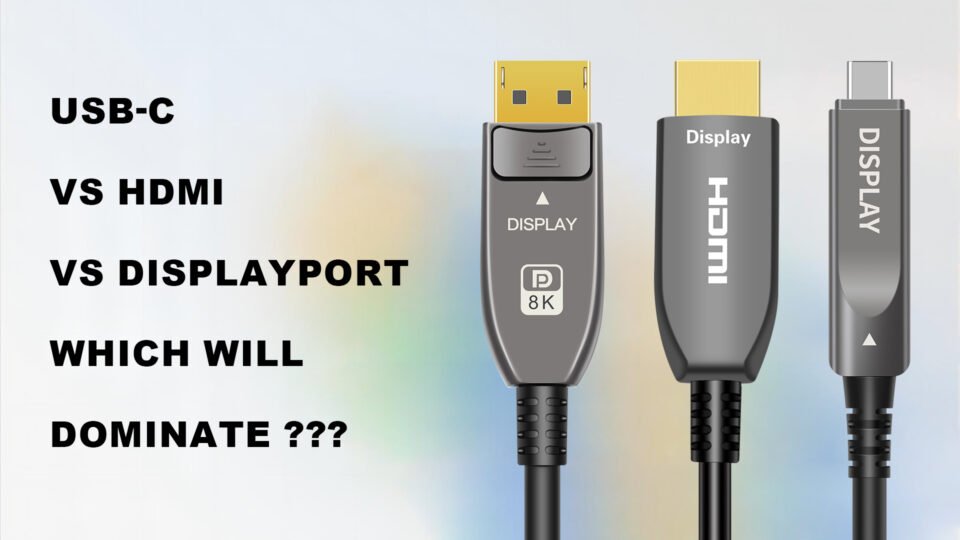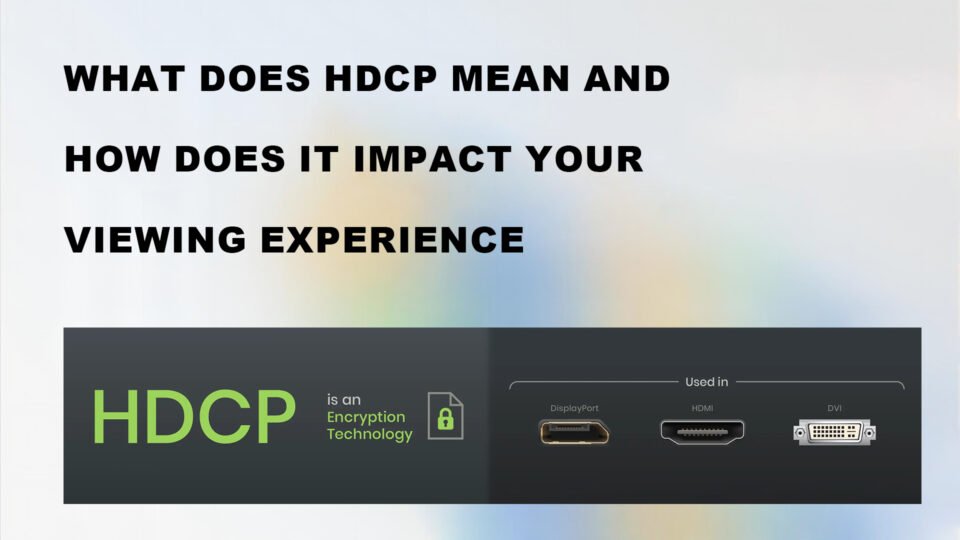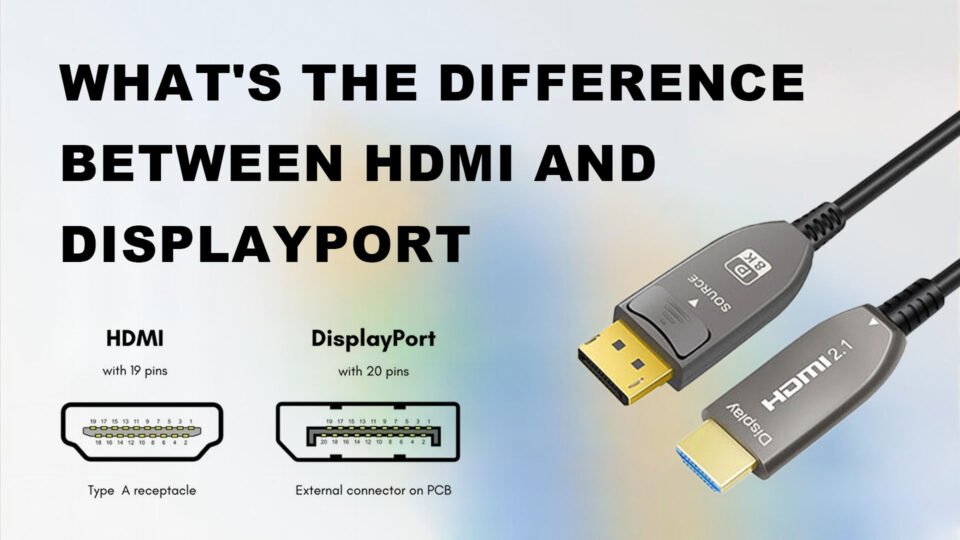When it comes to making a decision on choosing between Active Optical HDMI Cable and HDMI Extender for long distance HDMI signal transmission, it’s never easy to give an accurate answer. The choice between an Active Optical HDMI Cable and an HDMI Extender depends on your specific needs and the distance over which you need to transmit HDMI signals. Each option comes with its unique set of advantages and limitations, making it essential to understand which one suits your specific requirements.
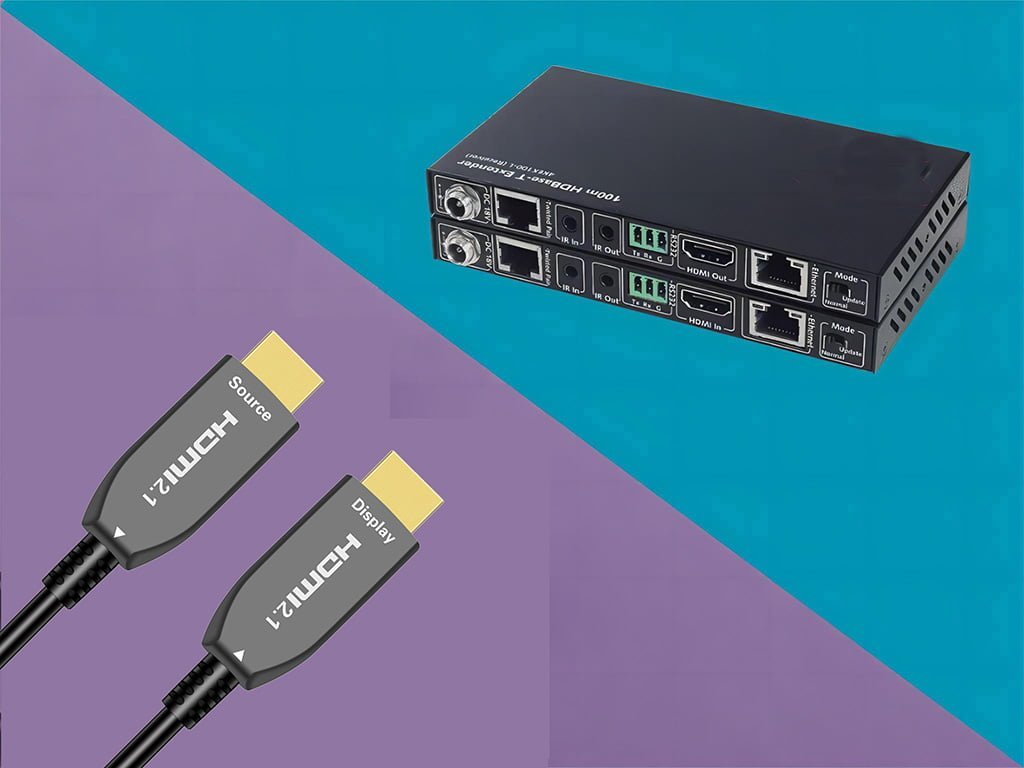
In this blog post, we’ll explore the differences between these two solutions to help you choose the most suitable solution.
Active Optical HDMI Cables:
Active Optical HDMI Cables, often referred to as AOC HDMI Cables, are cutting-edge connectivity solutions designed to transmit high-definition audio and video signals over longer distances. Unlike traditional HDMI cables, AOC HDMI Cables incorporate embedded electronics that actively amplify and extend the signal’s reach without compromising quality. These cables use optical fibers to transmit data, allowing them to cover distances of up to 500 feet (150 meters) while delivering pristine 4K or 8K resolution, depending on the cable’s specifications. AOC HDMI Cables are ideal for home theaters, classrooms, conference rooms, and other settings where reliable, long-distance AV connectivity is essential, offering flexibility and signal integrity.
Active Optical HDMI Cables are known for their simplicity and convenience. Here are some key points to consider:
Advantages:
- Ease of Use: Active HDMI Cables are a straightforward plug-and-play solution. You connect them between your source device (e.g., Blu-ray player, gaming console) and your display (e.g., TV or projector), and you’re good to go.
- No Additional Equipment: Unlike HDMI Extenders, active optical cables are based on plug-and-play solution, making them easy and convenient for long distance HDMI signal runs. No extra transmitter and receiver units is neded, simplifying your setup.
- No External Power: Most active HDMI cables draw power directly from the source device, eliminating the need for external power sources.
Limitations:
- Limited Distance: Active Optical HDMI Cables are typically suitable for relatively distances up to about 500 feet (150 meters). Attempting longer runs might result in signal degradation.
- Fixed Length: These cables have a fixed length, limiting your flexibility in cable management. If the cable is too long for your needs, you’ll have excess cable to deal with.
You may be interested in our 4K Fiber Optic HDMI 2.0 Active Optical Cables:
-
 18Gbps 4K Active Fiber Optic HDMI Cable Factory Supply
18Gbps 4K Active Fiber Optic HDMI Cable Factory Supply -
 4K Fiber Optic HDMI2.0 AOC-Active Optical Cable-AM to AM-18Gbps
4K Fiber Optic HDMI2.0 AOC-Active Optical Cable-AM to AM-18Gbps -
 Armored 4K Fiber Optic HDMI AOC-Active Optical Cable on Roxtone PCD 310 drum-150m
Armored 4K Fiber Optic HDMI AOC-Active Optical Cable on Roxtone PCD 310 drum-150m -
 Armored 4K Active Optical HDMI Cable on Roxtone drum-AM to AM-100m
Armored 4K Active Optical HDMI Cable on Roxtone drum-AM to AM-100m -
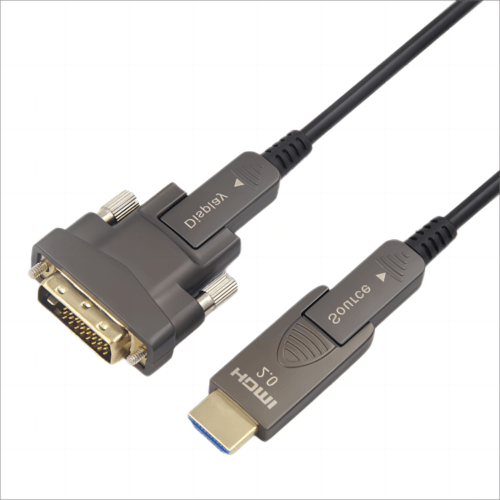 DVI to HDMI AOC-Active Optical Cable-10.2Gbps 4K@30Hz
DVI to HDMI AOC-Active Optical Cable-10.2Gbps 4K@30Hz -
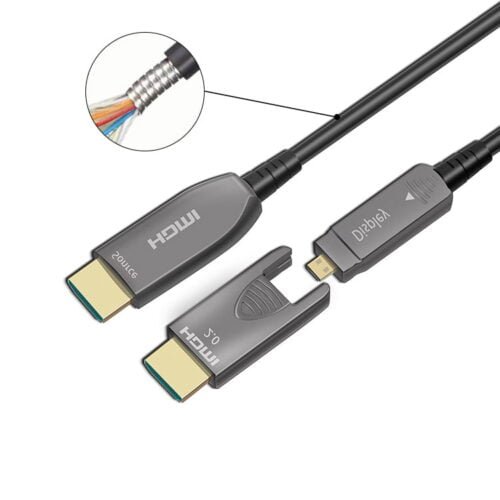 Armored Detachable 4K HDMI2.0 AOC-Active Optical Cable,DM-AM,18Gbps
Armored Detachable 4K HDMI2.0 AOC-Active Optical Cable,DM-AM,18Gbps -
 Detachable HDMI 2.0 AOC-Latching,DM-DM,18Gbps 4K@60Hz Active Optical Cable
Detachable HDMI 2.0 AOC-Latching,DM-DM,18Gbps 4K@60Hz Active Optical Cable -
 18Gbps 4K@60Hz Active Optial HDMI Cable Factory Supply$29.99 – $74.99
18Gbps 4K@60Hz Active Optial HDMI Cable Factory Supply$29.99 – $74.99
You may be interested in our 8K Fiber Optic HDMI 2.1 Active Optical Cables:
-
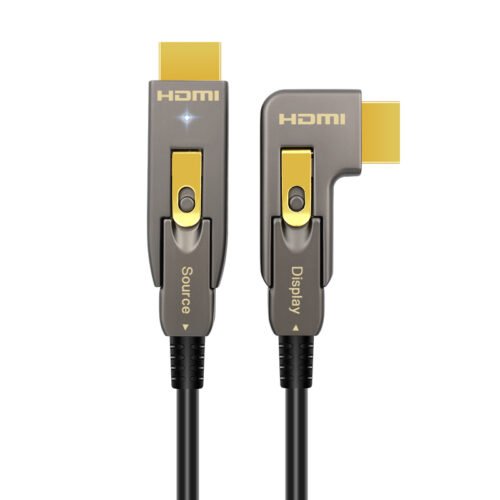 8K HDMI2.1 Fiber Optic Cable-Detachable-Latching-LED Indication,DM-Angled DM,48Gbps 4K/120Hz
8K HDMI2.1 Fiber Optic Cable-Detachable-Latching-LED Indication,DM-Angled DM,48Gbps 4K/120Hz -
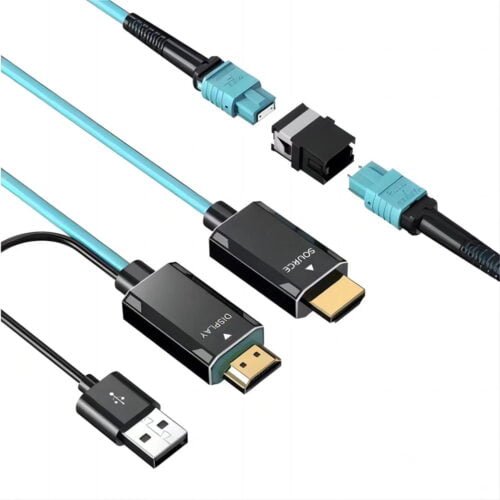 8K HDMI MPO Fiber Optic Extension Cable Kit-Detachable-300m-48Gbps-8K/60Hz & 4K/144Hz
8K HDMI MPO Fiber Optic Extension Cable Kit-Detachable-300m-48Gbps-8K/60Hz & 4K/144Hz -
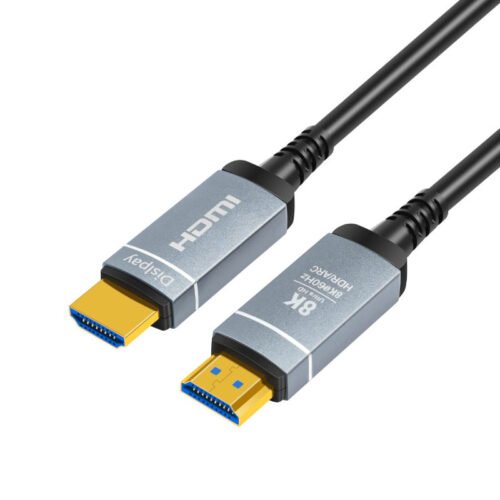 8K HDMI Fiber Optic Cable 100feet-HDMI 2.1-Aluminum Alloy Shell-8K/60Hz-48Gbps-Dynamic HDR 10 & eARC
8K HDMI Fiber Optic Cable 100feet-HDMI 2.1-Aluminum Alloy Shell-8K/60Hz-48Gbps-Dynamic HDR 10 & eARC -
 Super Slim 8K HDMI 2.1 Fiber Active Optical Cable-AM to AM-48Gbps
Super Slim 8K HDMI 2.1 Fiber Active Optical Cable-AM to AM-48Gbps -
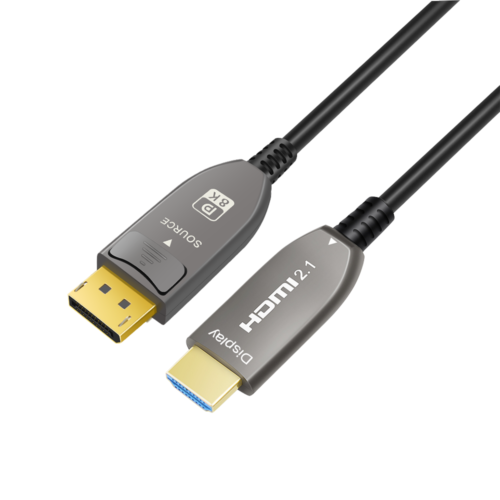 DisplayPort1.4 to HDMI Fiber Active Optical Cable-AOC-UHD 8K/60Hz,HDR,Black,20m
DisplayPort1.4 to HDMI Fiber Active Optical Cable-AOC-UHD 8K/60Hz,HDR,Black,20m -
 USB-C to HDMI Fiber Active Optical Cable-AOC-UHD 4K/60 Hz,HDR,Black,10 m (33 ft.)
USB-C to HDMI Fiber Active Optical Cable-AOC-UHD 4K/60 Hz,HDR,Black,10 m (33 ft.) -
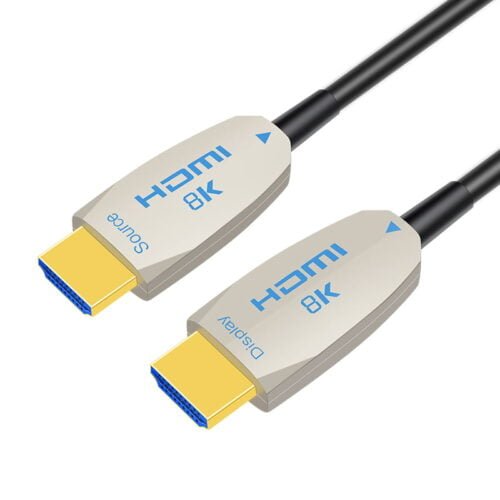 8K HDMI 2.1 AOC-Active Optical Cable-AM to AM-48Gbps
8K HDMI 2.1 AOC-Active Optical Cable-AM to AM-48Gbps -
 Detachable 8K Hybrid Active Optical HDMI Cable-Latching,DM-DM,48Gbps 8K@60Hz
Detachable 8K Hybrid Active Optical HDMI Cable-Latching,DM-DM,48Gbps 8K@60Hz -
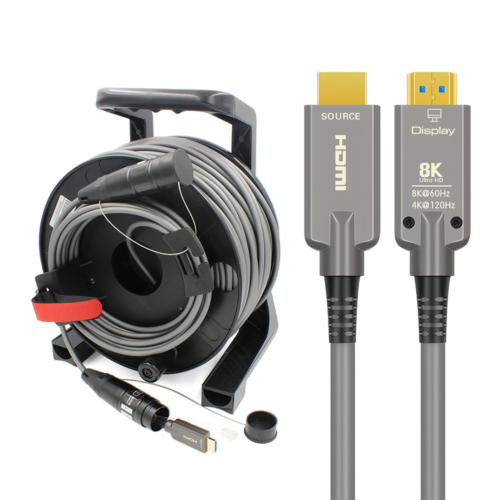 Armored 8K Fiber Optic HDMI 2.1 Active Optical Cable on Roxtone PCD 310 Drum
Armored 8K Fiber Optic HDMI 2.1 Active Optical Cable on Roxtone PCD 310 Drum
HDMI Extenders:
An HDMI extender is a device or solution designed to extend the reach of HDMI signals beyond their typical cable length limitations. It functions by capturing HDMI signals from a source device, transmitting them over longer distances via various mediums like CAT5e/6 cables or wireless technology, and then reconstructing the signals at the receiving end. HDMI extenders are utilized to bridge the gap between source and display devices, overcoming cable length restrictions and ensuring high-quality audio and video transmission over extended distances. They find applications in home entertainment systems, commercial installations, and other scenarios requiring long-distance HDMI signal distribution.
HDMI Extenders are designed for scenarios where you need to transmit HDMI signals over longer distances or require more flexibility in cable length:
Advantages:
- Extended Range: HDMI extenders can transmit HDMI signals over much longer distances, sometimes exceeding hundreds of feet or meters.
- Flexibility: You can use standard HDMI cables between the source, extender, and display, giving you more control over cable length.
- Signal Amplification: Many HDMI extenders include signal amplification, ensuring reliable transmission even over extended distances.
Limitations:
- Additional Equipment: HDMI extenders come with both a transmitter and a receiver unit, adding complexity to your setup. This makes them better suited for professional installations or more extensive setups.
- Power Requirements: Some HDMI extenders may require external power sources, which can be less convenient in certain scenarios.
Choosing the Right Solution:
The choice between Active Optical HDMI Cables and HDMI Extenders depends on your specific needs:
- Active HDMI Cables are ideal when you need to transmit HDMI signals over distances up to approximately 500 feet, and prefer a simple, plug-and-play solution.
- HDMI Extenders shine when you require longer distances, more cable management flexibility, or the ability to overcome signal degradation. They are suitable for professional installations and scenarios demanding extended cable runs.
Ultimately, the best choice depends on the unique requirements of your audiovisual setup. Understanding the differences between these solutions empowers you to make an informed decision, ensuring your AV system performs at its best.
At Fiberlink, we specialize in manufacturing high-quality active optical HDMI cables that cater to the demands of modern audiovisual systems. Our fiber optic HDMI cables are designed to deliver uncompromising performance, ensuring that you enjoy the true potential of your high-definition devices.
Besides the standard active optical HDMI Cables, we also provide tailor-made solutions for customer specific needs.
Please don’t hesitate to contact us.



